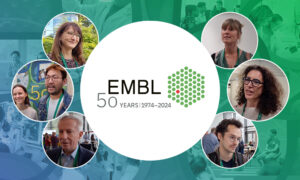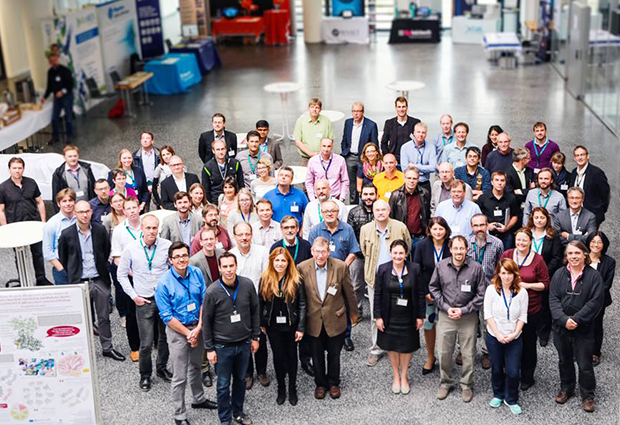
Read the latest Issue
Many pharmaceutical companies have traditionally used structural biology methods, such as crystallography, as a useful tool for studying novel drug molecules and understanding how they work. As technologies at synchrotron facilities develop, and approaches become more diverse, it is increasingly important to engage in discussion with industrial partners to reflect on their needs and inform them of new possibilities and service options. A recent workshop held in Hamburg aimed to create a platform for consultation, and strengthen relationships between industrial and academic partners.

From 15 to 17 June, an industrial workshop to encourage dialogue between synchrotron radiation facility partners and pharma and biotech companies took place at EMBL Hamburg. The diverse meeting – organised by the EU project BioStruct-X, which funds access to European synchrotron radiation facilities – attracted around 80 participants from across Europe to the Deutsches Elektronen-Synchrotron (DESY) campus. “This workshop represented the ideal platform for building bridges between industry and service provision facilities,” said EMBL Group Leader Dmitri Svergun, BioStruct-X coordinator and organiser of the workshop. “The direct contact between both parties was very fruitful and we had some really lively and constructive discussions.”

A reoccurring topic throughout the event was the role of ‘hybrid’ methods in structural biology studies. More and more projects present data collected via several different techniques to achieve an all-encompassing picture of samples: for example, combining structural data from crystallography and Small Angle X-ray Scattering (SAXS) experiments with biophysical information on molecule stability and sample purity. But just how interested are industrial partners in using SAXS and other biophysical methods? One session demonstrated that recent improvements in software and hardware has transformed SAXS into a high-throughput technique, making it an attractive choice for industry – the reaction was positive, with several industrial participants expressing an interest in adding more techniques to their research pipelines.

How industrial partners might best access beamlines and associated facilities was another key discussion point. For those seeking an alternative to the hands-on approach, a positive development for both sides was the role of ‘mediator’ companies, closely associated to the synchrotron facilities. These companies aim to take care of time-consuming paper work, carry out data collection at the beamlines and ensure faster access, often accepting short-notice slots and night shifts, as well as also provide structural modelling and interpretation as needed. Alternatively, industry partners can now access many beamlines remotely, meaning less costly travel and more effective use of time.

Alongside the diverse and intense scientific programme, the workshop included ample time for mingling and making connections, with a poster session and special dinner for all participants. A highlight was the Women in Science networking lunch, during which three invited female scientists shared their experiences and thoughts on the barriers women face in science, prompting an insightful moderated discussion on themes ranging from unconscious bias to mentorship. “We were amazed at how much interest we received,” said Melissa Graewert, who organised the over-subscribed satellite session. “We hope this will spur similar events on the campus in the future.”

Although BioStruct-X will finish in 2016, another integrated EU project called iNEXT will continue to provide funding for access to several structural methods including synchrotron X-ray scattering and crystallography, NMR and electron microscopy, specifically for European users engaged in translational research. iNEXT deputy coordinator Anastassis Perrakis reiterated how important the workshop in Hamburg has been to reinforce dialogue, and invited all participants to the next meeting within the new framework to further strengthen relationships between small companies, established industries and academics alike.

Looking for past print editions of EMBLetc.? Browse our archive, going back 20 years.
EMBLetc. archive